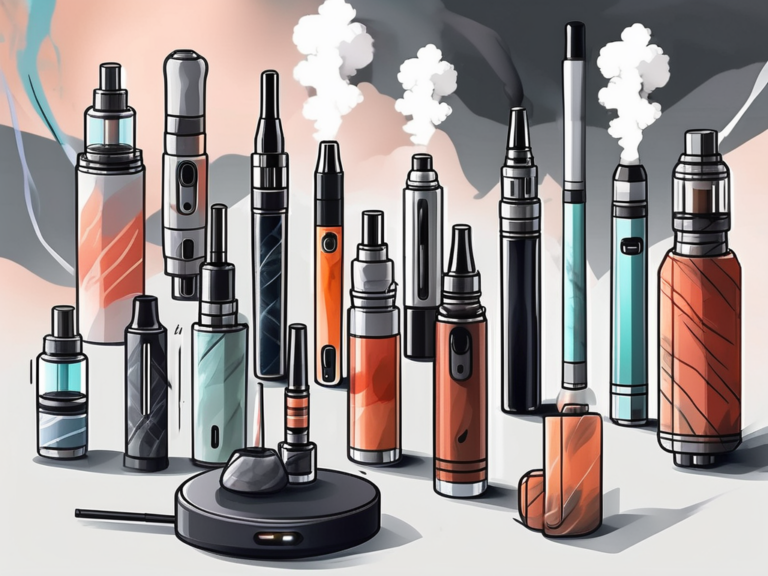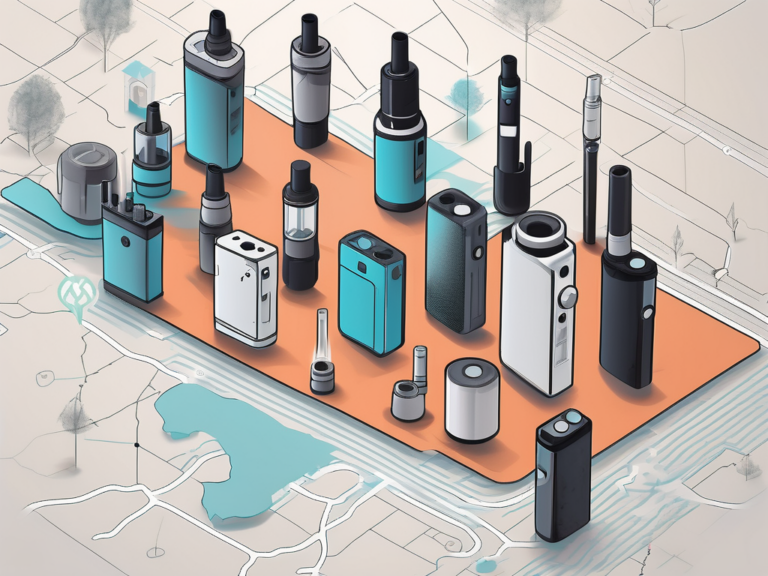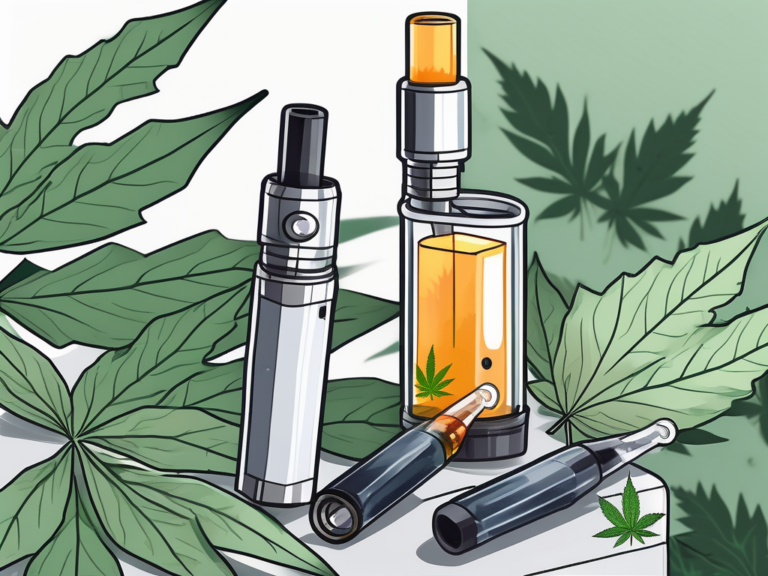why do vapes explode
In recent years, there has been growing concern about the safety of vaping devices, with reports of vape explosions making headlines around the world. These incidents have led to injuries, property damage, and even loss of life. So, why do vapes explode? In this article, we will delve into the mechanics, science, and common causes behind vape explosions, as well as explore ways to prevent such incidents and discuss the aftermath.
Understanding the Mechanics of Vapes
Vaping devices, also known as electronic cigarettes or e-cigarettes, consist of several key components that work together to produce vapor. These components include the battery, atomizer, and e-liquid. To understand why vapes can explode, let’s take a closer look at the role of the battery and the function of the atomizer.
Delving deeper into the intricate world of vaping, it’s fascinating to note that the battery plays a pivotal role in the overall functionality of these devices. The majority of electronic cigarettes rely on lithium-ion batteries for their impressive energy density and long-lasting power capabilities. However, it’s crucial to handle these batteries with care and caution. Factors such as overcharging, using incompatible chargers, or subjecting the battery to extreme temperatures can potentially trigger a dangerous phenomenon known as thermal runaway, ultimately leading to an explosion.
The Role of the Battery in Vapes
The battery is a crucial component of any vaping device. Most electronic cigarettes use lithium-ion batteries due to their high energy density and long-lasting power. However, if not handled properly, these batteries can pose a safety risk. Issues such as overcharging, using improper chargers, or exposing the battery to extreme temperatures can potentially lead to thermal runaway, resulting in an explosion.
Furthermore, exploring the intricate workings of the atomizer sheds light on its essential function within a vape device. The atomizer serves the crucial purpose of heating the e-liquid and transforming it into the inhalable vapor that users enjoy. Comprising a heating coil and a wick, the atomizer operates by vaporizing the liquid when the coil reaches the necessary temperature. However, if the atomizer is defective or of substandard quality, it can give rise to a short circuit, causing an unsafe buildup of heat that may culminate in an explosion.
The Function of the Atomizer
The atomizer in a vape device is responsible for heating the e-liquid and turning it into vapor. It consists of a heating coil and a wick. When the coil heats up, it vaporizes the liquid, allowing the user to inhale it. If the atomizer is faulty or poorly made, it can cause a short circuit, leading to excessive heat buildup and a potential explosion.
The Science Behind Vape Explosions
To understand vape explosions further, we need to examine the chemistry of lithium-ion batteries and the impact of heat and pressure.
Vape explosions have garnered significant attention due to their potential dangers. The chemistry of lithium-ion batteries plays a crucial role in these incidents. These batteries contain a flammable electrolyte, typically a mixture of lithium salts and organic solvents. When the battery is compromised, such as through physical damage or manufacturing defects, the electrolyte can come into contact with the electrodes, triggering a chain reaction. This reaction releases a large amount of stored energy in a short period, leading to a sudden and forceful explosion.
The Chemistry of Lithium-ion Batteries
Lithium-ion batteries contain a flammable electrolyte that can cause an explosion when exposed to certain conditions. If the battery casing fails, the electrolyte can come into contact with the electrodes, resulting in a chemical reaction. The rapid release of stored energy can lead to a violent explosion.
Furthermore, the design and quality of lithium-ion batteries are critical factors in preventing explosions. Inferior manufacturing processes or the use of substandard materials can increase the likelihood of a catastrophic failure. As such, reputable battery manufacturers invest heavily in research and development to enhance the safety features of their products, including improved electrode materials and more robust casing designs.
The Impact of Heat and Pressure
Heat and pressure are two critical factors that can contribute to vape explosions. Excessive heat can cause the battery to overheat, leading to thermal runaway and subsequent explosion. Additionally, if a defective or damaged device is exposed to high pressure or physical impact, it can cause the battery to rupture, resulting in an explosion.
It is essential for users to handle lithium-ion batteries with care and follow proper charging and storage guidelines to minimize the risk of explosions. By understanding the underlying science and potential hazards associated with these batteries, vapers can take proactive steps to ensure their safety and the safety of those around them.
Common Causes of Vape Explosions
While understanding the mechanics and science behind vape explosions is crucial; it is equally important to be aware of the common causes associated with these incidents. Let’s take a closer look at user errors and manufacturing defects that can lead to vape explosions.
Vaping has gained popularity in recent years, but with it comes the responsibility of handling the devices safely. User errors are one of the leading causes of vape explosions. Mishandling the battery, such as carrying loose batteries in pockets where they can come into contact with metal objects like keys or coins, can lead to a short circuit and potentially an explosion. Using incompatible chargers or overcharging the device beyond its capacity are also common user errors that can significantly increase the risk of an explosion.
User Errors Leading to Explosions
One of the leading causes of vape explosions is user error. Mishandling the battery, using incompatible chargers, or overcharging the device can significantly increase the risk of an explosion. Furthermore, modifying the device or using unauthorized components can compromise its safety features, potentially leading to catastrophic consequences.
Moreover, user error extends to the maintenance of the vape device. Failing to clean the device regularly can lead to a buildup of e-liquid residue, which can seep into the battery compartment and cause a short circuit. Ignoring signs of wear and tear on the device, such as frayed charging cables or damaged battery wraps, can also pose a safety hazard.
Manufacturing Defects and Quality Control
Manufacturers play a crucial role in preventing vape explosions. Poor quality control, substandard materials, and lack of adherence to safety standards can result in defective devices. From faulty batteries to improperly sealed atomizers, these manufacturing defects can put users at risk and increase the likelihood of an explosion.
It is essential for manufacturers to prioritize quality control measures and rigorous testing to ensure that every vape device that reaches the market meets safety standards. Regular inspections of production facilities, thorough testing of components, and adherence to industry regulations are vital in preventing manufacturing defects that could lead to catastrophic incidents.
Preventing Vape Explosions
Although vape explosions can be devastating, there are steps users can take to minimize the risks and protect themselves. By following safe usage and maintenance tips, as well as recognizing warning signs of potential explosions, users can greatly reduce the chances of experiencing a vape explosion.
Vaping has become increasingly popular in recent years, but with its rise in popularity comes the importance of understanding the potential risks involved. One crucial aspect of preventing vape explosions is to ensure that users are well-informed about the devices they are using. This includes understanding the components of the vape device, such as the battery, coils, and tank, and how they work together to create vapor.
Safe Usage and Maintenance Tips
Proper usage and maintenance of vaping devices are crucial for preventing explosions. This includes using the correct charger, storing the device away from extreme temperatures, and avoiding overcharging the battery. Additionally, regular inspections of the device for any signs of wear or damage, and adhering to the manufacturer’s guidelines, will help ensure its safe operation.
Another important aspect of safe vape usage is being mindful of the e-liquids being used. Ensuring that the e-liquids are compatible with the device and are stored properly can help prevent malfunctions that may lead to explosions. It is also recommended to keep the device clean and free of any debris or residue that could potentially cause a short circuit.
Recognizing Warning Signs of Potential Explosions
Being aware of warning signs is essential in preventing vape explosions. If a device starts to overheat, shows signs of a swollen or damaged battery, or emits an unusual odor, it should be immediately removed from use. Recognizing these indicators and seeking professional advice can help prevent potentially dangerous situations.
Furthermore, educating oneself about battery safety is paramount in preventing vape explosions. Understanding the importance of using batteries from reputable manufacturers, proper battery handling, and avoiding contact between metal objects and batteries can significantly reduce the risk of accidents.
The Aftermath of a Vape Explosion
Unfortunately, when vape explosions occur, they can have severe consequences. It is essential to understand the potential health risks and legal implications associated with these incidents.
Health Risks and Injuries
Vape explosions can result in various injuries, such as burns, lacerations, and even permanent disfigurement. The high temperatures and flying debris can cause significant physical harm to users and those nearby. In some cases, the injuries can be life-threatening or lead to long-term medical complications.
Legal Implications and Liability
When a vape explosion occurs, there may be legal implications for both users and manufacturers. Users may face legal challenges if they were using the device improperly or had modified it in any way. On the other hand, manufacturers can be held liable for producing defective devices or failing to exercise proper quality control.
In conclusion, understanding why vapes explode requires knowledge of the device’s mechanics, the science behind vape explosions, and the common causes associated with these incidents. By following safe usage practices, recognizing warning signs, and promoting better manufacturing standards, we can strive to minimize the occurrence of vape explosions and prioritize the safety of users.






